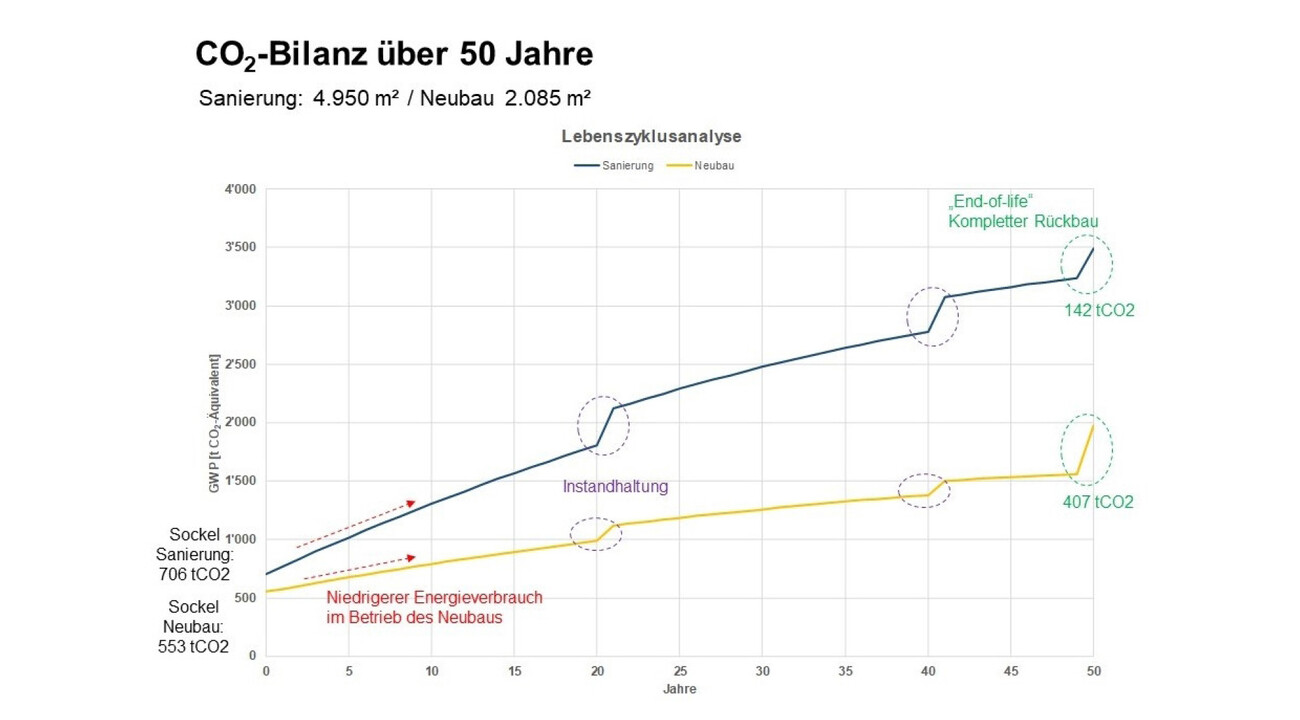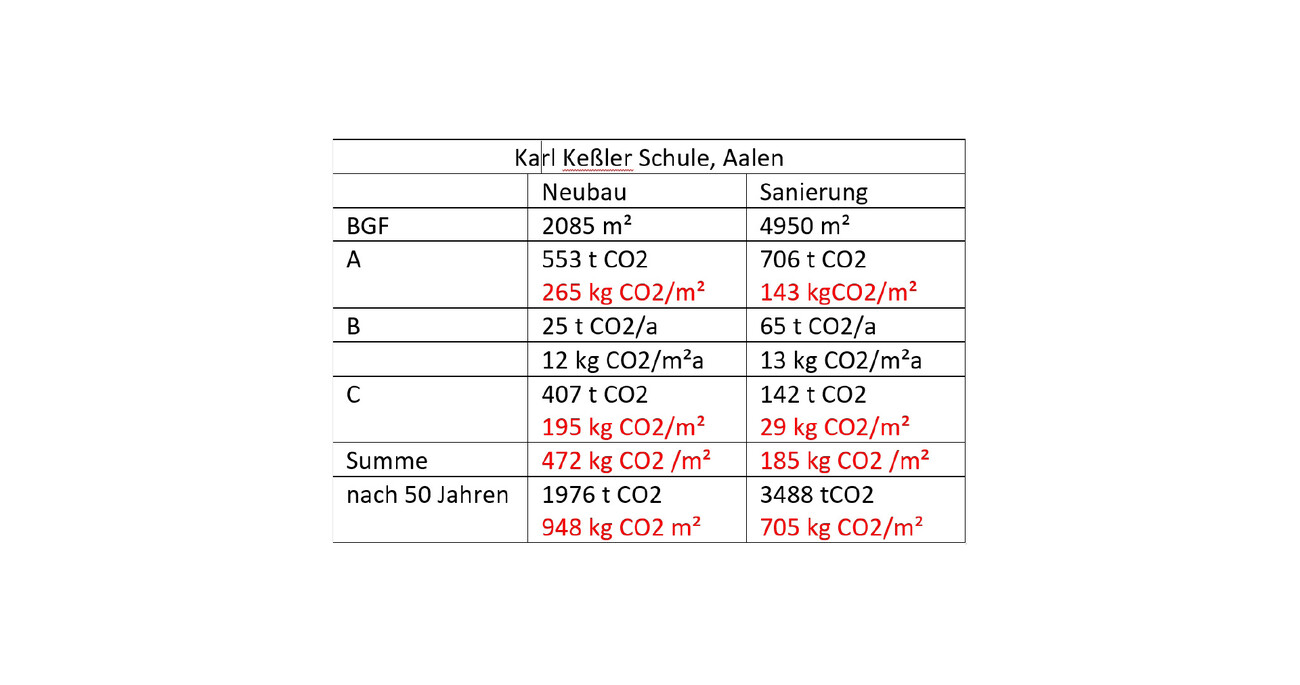Analyse du cycle de vie École Karl-Kessler, Aalen, Allemagne

Two models for a school are analyzed and compared to find out which model, added up over the entire life cycle, leaves the smaller ecological footprint:
An old building to be renovated or a new school in place of the old one?
For this purpose, we use life cycle assessment (LCA). Such a systematic analysis of environmental impacts considers the school over its entire "life cycle." LCA includes all environmental impacts during the production, usage and disposal of the things used, as well as the associated upstream and downstream processes (e.g., production of raw materials, consumables and supplies). The basis of the used data are different standards (DIN EN 15804 & DIN EN ISO 14025). It should be mentioned that not all data in the database “Ökobau.dat” have the same quality and consistency. The database is constantly being expanded, which increases the quality of the data.
As a basis for the evaluation of the CO2 content for the new building and the renovation, Liebel Architekten created a detailed 3d model for each of the two variants and defined the superstructures of walls, ceilings, etc. together with the client.
In both variants, the wood chip heating system of the existing building is taken into account and the same air conditioning and ventilation concept applies. A hybrid ventilation system supplies the rooms with fresh air. Shock ventilation is part of the concept, as is basic mechanical ventilation via a ventilation cascade. The supply air is introduced into the classrooms, flows over into the corridor and is extracted there (with heat recovery via an exhaust air heat pump). The indoor zones receive a mechanical supply and exhaust air system with heat recovery.
The result shows a clear advantage for the new building.
The main reason for this result is the large difference in usable floor space between the refurbishment (4,950 m² / 53,281 f²) and the new building (around 2,085 m² / 22,442 ft²).
Furthermore, the CO2 emissions during operation - i.e. for heating, ventilation, etc. - are significantly lower for the small and more area-efficient new building.
The new building therefore essentially scores due to the more favorable values in operation. Using a lot of wood as a building material also plays a role.
To illustrate the variants independently of the area, the equivalent emission values are also calculated back to the square meter. The assumption for the C-phase is the "worst case", i.e. thermal recycling. Reuse is not predictable.
A new building variant with about 3,000 m² / 32,291 ft² was also roughly considered (based on a linear upscaling of the construction and energy consumption of the new building). Even under these assumptions, the new building would have the advantage.
However, if using the same area for the new building, refurbishment would be better.

